Lilac Alice Harding: description, cultivation and application on the site
Lilac attractive primarily for its heady aroma. Many varieties are distinguished by beautiful delicate flowers. One of them is the lilac Alice Harding.
Content:
- Features of the structure of the variety
- Reproduction of lilacs Alice Harding
- All about planting a seedling
- Proper care of the shrub
- The use of lilacs by Alice Harding
Features of the structure of the variety
Lilac grows wild in Eurasia. Prefers mountainous areas or areas where water does not stagnate in the roots. Even with a short stagnation of moisture, the young roots of the plant die off, the bush gets sick. The lilac variety Alice Harding has been known since 1938. It was created by the famous French breeder Lemoine.
Variety characteristic:
- The height of the bush reaches 3-4 m. Shoots are straight, strong. The bark is light gray.
- Leaves are light green, large, reaching a length of 12 cm. They are located opposite on the shoot. The shape is usual for the species, heart-shaped. They bloom in early spring and retain their appearance until frost.
- At the tips of the shoots, inflorescences are formed up to 20 cm in size and 8 cm in average density. They consist of two or three panicle inflorescences.
- The flowers are large, densely double. Each of them consists of 3-4 rims, separated from each other.
- The petals are white, each up to 3 cm in diameter. They are slightly raised, and their tips are bent upward.
Under the weight of the flowers, the inflorescences droop downward. The bush becomes beautiful even in the bud phase. They are greenish-creamy in color. When they unfold, they gradually turn white and become pure white during the flowering period.
The aroma of flowers is delicate, not very strong.
The bush is classified as a medium flowering variety. It blooms in May. Duration of flowering up to 2 weeks. Then, in place of the flowers, bivalve boxes are formed, in which several seeds are located. Each of them is equipped with a wing for the flight. This is a natural way of breeding lilacs.
Reproduction of lilacs Alice Harding
You cannot get Alice Harding varieties from seeds. Through them, the characteristics of the mother species are poorly transmitted. Therefore, it is better to use other breeding methods:
- Root suckers (for own-rooted varieties).
- Layers.
- Green cuttings.
- Vaccination.
For reproduction by offspring or layering, a bush is needed. If not available, you can try rooting cuttings. But they take root badly, and even then only green, lignified ones practically do not lend themselves to rooting.
Reproduction cuttings requires constant attention. They are cut during the flowering period or immediately after it. Do not use spinning tops or thick shoots. They don't take root. Take thin or medium thickness from the middle part of the shoot. There should be at least 3 nodes on the handle, and internodes as short as possible.
Cutting rules:
- Cuttings are cut early in the morning, before the heat, when the leaves have a good turgor. Remove the bottom leaves completely. A little below the knot is made oblique with a sharp grafting knife. The remaining leaves are cut in half. The delicate tip is removed completely. The cut is made straight.
- Install the prepared cuttings for 16 hours in the solution of the Epin growth stimulator. Then they are taken out and washed in clean water.
- Loose soil is prepared.A mixture of peat with sand or perlite in equal parts is suitable. Pour a layer of the prepared mixture with a height of 20 cm, sprinkle it on top with river sand 5 cm.
- Spill the prepared soil with a Fundazole solution to protect it from infection with fungal diseases.
- Dip the edge of the cutting into Kornevin powder. This will help the formation of the root system. The cutting is immersed in the hole made so that Kornevin does not crumble. The cut knot should be in the sand and not reach the ground.
- Cover with 5-liter cut-off bottles or make a special greenhouse shelter out of film. Shade. Can be covered with "universal" plastic fruit crates.
- Sprayed 2-3 times a day, bringing the air humidity to 100%. The sand is moistened. After 1.5-2 months, roots begin to appear. New leaves do not develop, and by autumn the old ones turn black and disappear. But the kidneys have to stay alive.
Rooted cuttings are planted in a school for growing in the fall. The place should be light, and the soil should be light, neutral acidity or slightly acidic. It can be deoxidized by adding dolomite flour or wood ash, 200 g per square meter. Cuttings are planted at a distance of 30 cm from each other. The soil is not compacted so as not to tear off the delicate roots. Shelter for the winter. In the spring they watered, fertilized with nitrogen fertilizers. After 2 years, they are planted in a permanent place. And after another 3 years, the lilac will bloom.
Inoculate lilac Alice Harding with a cuttings (in spring) or a dormant bud (in summer). This method is called budding. Hungarian go ordinary lilac, privet is used as a stock
All about planting a seedling
It is easier to purchase a lilac bush Alice Harding from flower growers. The root system should be branched, have a length of up to 30 cm. It is planted from mid-July to the second decade of September. If you do this later, closer to frost, or in spring, then the bush will take root poorly and grow poorly in the first year.
They choose a place that is sunny and cozy. Particular attention is paid to the level of groundwater and the possibility of flooding the site.
If water collects there for any length of time, it is best to look elsewhere. In extreme cases, a lilac bush is planted on a specially poured hill, at the bottom of which a drainage layer is preliminarily laid. Lilac is not particularly demanding on the soil, but prefers fertile, nutritious soils of neutral and medium acidity.
Features of planting lilacs:
- A hole is dug on fertile soils with a depth and radius of 50 cm, and on poor soils it is increased to 1 m.
- Mix the excavated earth with humus or compostadd a glass wood ash and 20 g of superphosphate. If the soil is acidic, the amount of ash is doubled.
- A drainage layer is laid at the bottom of the prepared pit. It is prepared from gravel, broken brick, expanded clay.
- Lilacs are planted in the morning, evening or in cloudy weather. Cut the crown into a couple of buds so that the bush branches. The ends of the roots are slightly updated by cutting off a couple of millimeters.
- If dry, damaged or diseased roots are found, they are removed to healthy tissue.
- A layer of soil is poured at the bottom of the pit so that the bush does not sink too deep into it. A seedling is installed, the roots are leveled in different directions.
- Cover with prepared soil. Seal carefully so as not to damage the thin roots.
When planting several bushes, the distance between them is 2-3 m.
Proper care of the shrub
That the shrub grew healthy and pleased with its beautiful flowering, it needs to be properly looked after:
- The ground around the bush is watered with two buckets of water. The trunk circle is mulched with peat, humus, and mown grass. The layer of mulch should be no thinner than 7 cm. In this case, it will protect the soil from drying out. Water at least once a week.
- For the winter, the bush does not need shelter. The root system of young seedlings is mulched with humus, compost and dry leaves up to 10 cm thick.
- The next year, the soil is loosened up to 4 times per season.Water as needed. Be sure to do this during the flowering period, if the soil dries out and before fertilizing.
- They begin to feed with nitrogen from the second year. Make 50 g of urea or 70 g of saltpeter under the bush per season. Alice Harding lilac reacts well to organic fertilization. You can add a couple of buckets of slurry. Prepare it by stirring 2 liters of manure in a bucket of water. A groove with a radius of 50 cm is dug along the perimeter of the trunk circle and the prepared fertilizer is poured into it. Then they cover it with earth.
- From the third year, they begin to add phosphorus and potassium. In autumn, 35 g of superphosphate and potassium nitrate are sealed to a depth of 8 cm. This is enough for an adult plant for 2 years. You can apply a complex fertilizer made from wood ash (100 g per 4 l of water).
- The first years, lilac Alice Harding grows slowly, few shoots are formed. In the third year, they begin to form a bush. In the spring, up to 7 branches are left, arranged harmoniously. The rest are removed. This is done in early spring, before the start of sap flow. Root shoots are cut out on the ring. This can be done in spring and summer. The next year, they continue to form the crown. 8 buds are left on each skeletal branch. This will allow you not to overload the bush with inflorescences and make them larger.
Lilac Alice Harding is grown for flowers. Therefore, during the flowering period, some of them are plucked. There is no need to be afraid that this has caused harm to the plant. It is recommended to cut off up to two thirds of the inflorescences. This is beneficial for the bush because it encourages the growth of shoots on which flower buds form. As a result, next year's bloom will be more lush. Young shoots should not be picked by hand. At the same time, strips of bark are torn off from the remaining part of the branch. It is better to use a garden knife or pruner for this.
The use of lilacs by Alice Harding
Alice Harding lilac bushes are planted in groups or in solitary plantings. They look beautiful in combination with other varieties of lilacs, including ordinary ones.
It goes well with all types of conifers. Various varieties and types of peonies, blooming at the same time with lilacs, look beautiful against its background. It can be either white or contrasting colors. Lilac is used to strengthen the slopes, which are subject to erosion in the spring. From the bushes they form hedges.
Lilac is decorative throughout the growing season, its beautiful leaves remain green until late autumn, so the bushes will serve as a decoration for the site after flowering.
In order for lilac bushes to please with abundant flowering and large flowers, experienced gardeners transplant them after 3 years to a new place. The transplant is carried out after the end of flowering. They dig a bush together with a lump of earth, lay it on an oilcloth and transfer it to a new place. The pit is prepared much larger than the size of the root system so that nutritious soil, humus, compost can be added to the remaining gap.
More information can be found in the video:



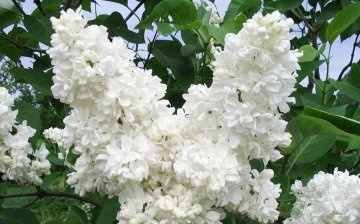

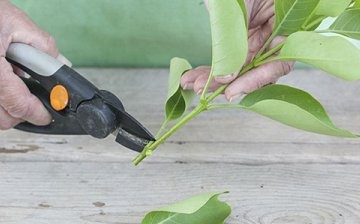

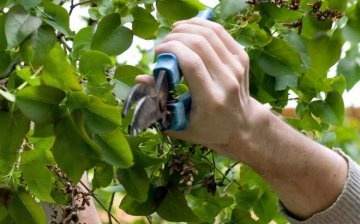







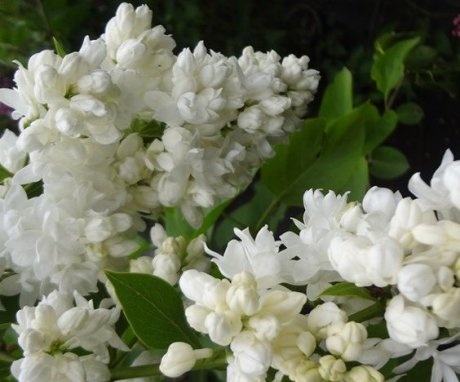
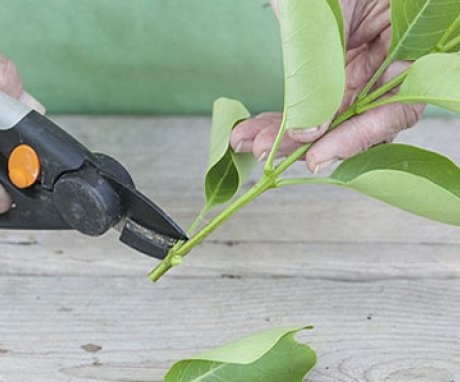
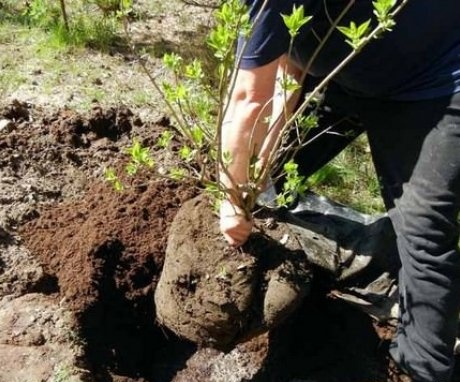


How incredibly beautiful the white lilac looks, I want to plant it for a long time, but I'm not sure that I can take care of it properly. Now the elementary basics are clear to me, I will definitely buy a seedling.